Room-by-Room Decluttering Checklist for a Refreshed Home
Are you looking to declutter your home but don’t know where to start? Our room-by-room decluttering checklist for a refreshed home is here to help! Tackling one room at a time can make the process less overwhelming and more effective. Whether you’re preparing for a big spring clean or just want to freshen up your living space, this checklist will guide you through decluttering your home, creating a more organized and peaceful environment.
Decluttering your home can be a refreshing and satisfying process. Remember, the key is to take it one step at a time. Feel free to tailor this checklist to your home’s specific needs. As you declutter, you might find items that you want to keep but don’t need at hand. That’s where Personal Mini Storage comes in – offering a range of storage solutions to keep your valuable possessions safe and out of the way, yet accessible whenever you need them. Happy decluttering!
Have items you need to store after decluttering? Visit Personal Mini Storage for a variety of storage options that fit your needs. Share your decluttering and storage experiences in the comments below or on our social media pages. We love seeing how our solutions help you create more space and organization in your life!
The Ultimate Guide to Decluttering Your Home in January 2024
January is the perfect month for a fresh start, and what better way to begin the new year than by decluttering your home? The post-holiday period is an ideal time to clear out the old and make room for the new. Here’s how you can efficiently declutter your home this January.
- Embrace the New Year Energy
- Post-Holiday Declutter
- Wardrobe Refresh
- Declutter Room by Room
- Organize Holiday Gifts
- Kitchen Clean-Up
- Paperwork Purge
- New Year, New Decor
- Tech and Electronic Clutter
- Create a System for Incoming Items
- Involve the Family
- Reflect and Reward
1. Embrace the New Year Energy

Use the fresh energy of the new year to motivate your decluttering efforts. Set specific goals and create a plan to tackle different areas of your home throughout the month. Plan your schedule with goal-setting apps like Todoist or Trello.
2. Post-Holiday Declutter

Start by taking down your holiday decorations. As you pack them away, discard broken ornaments and donate decorations you no longer love. If space is an issue, consider a storage unit for seasonal items.
3. Wardrobe Refresh

January is a great time to organize your wardrobe. With the cold weather still upon us, remove and donate winter clothes you haven’t worn. Keep your wardrobe size in check by following the one in, one out rule. Now’s the time to organize your wardrobe. Donate or sell clothes you no longer need through services like ThredUp.
4. Declutter Room by Room

Tackle one room at a time, using organization solutions from The Container Store to maximize your space efficiently and to avoid feeling overwhelmed. Start with high-traffic areas like the living room or kitchen. Spend a day or a weekend on each room, depending on the size and amount of clutter.
5. Organize Holiday Gifts

Find a home for each of your holiday gifts. If you received items you don’t need or want, donate them. For gifts you wish to keep but don’t have immediate use for, a short-term storage option can be a convenient solution.
6. Kitchen Clean Up

Go through your pantry and fridge. Dispose of expired items and donate non-perishables you won’t use. Reorganize your kitchenware and consider upgrading storage solutions to maximize space. Reorganize your kitchen and pantry. For innovative storage and organization tools, explore Oxo Good Grips.
7. Paperwork Purge

Sort through paperwork that’s accumulated over the past year. Shred unnecessary documents and consider digitizing important papers to reduce clutter. Digitize important documents to reduce clutter, using tools like Evernote.
8. New Year, New Decor

Reevaluate your home decor. Removing a few items can make your space feel larger and more serene. If you’re not ready to part with certain decor items, store them temporarily in a storage unit.
9. Tech and Electronic Clutter

Gather all unused electronics, cords, and gadgets. Recycle or donate items that no longer serve you. This clears both physical and visual clutter. Recycle unused electronics and gadgets through programs like Best Buy Recycling.
10. Create a System for Incoming Items

Establish a system for incoming mail, purchases, and other items. Having a designated spot for new things helps prevent clutter from building up again. Manage your mail and purchases effectively. For secure package deliveries, consider Amazon Key.
11. Involve the Family

Make decluttering a family activity. Assign tasks to each family member and make it fun. This helps maintain the tidiness of your home and teaches everyone the value of an organized space.
12. Reflect and Reward
At the end of January, reflect on the progress you’ve made. Reward yourself for the hard work. This positive reinforcement can encourage you to maintain a decluttered and organized home throughout the year. After a successful decluttering month, reward yourself with a subscription to a mindfulness app like Headspace.
By following these tips, you can start your year on the right foot with a clean, organized, and decluttered home. Remember, the journey to a tidy space is ongoing, but with the right tools and mindset, it can be both fulfilling and enjoyable. Happy decluttering!
Spring Clean Your Office Space: Decluttering to Improve Productivity
As much as you’d like to convince yourself that your chaotic office space is perfectly fine for your needs, chances are, it’s just not. Clear spaces and easy-to-find supplies are better for promoting productivity and studies show that workers with a neat workspace don’t mind spending as much time there as the ones who sit at a disorganized desk all day long.
Spring is a good time to get a handle on your office clutter and to give yourself an office space you can feel comfortable in. Whether you work in a cubicle or from your own home, these tips will help you de-clutter your office space and boost your productivity.
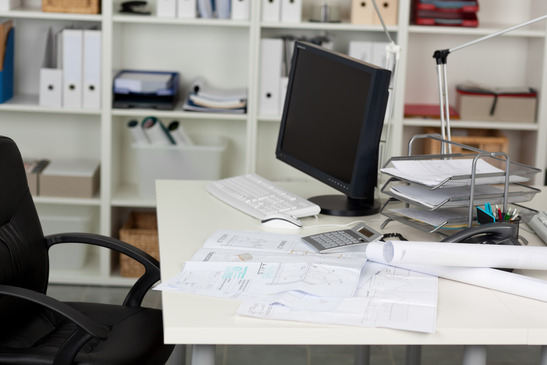
Desktop Space
Most people have, at minimum, a computer and telephone in the office, whether it’s at home or otherwise. But what about all the other items that seem to take up residence on your desk, demanding your attention and stealing minutes from your day? Try this simple exercise: remove everything that you don’t use every day and see what’s left. You’ll probably have your computer, phone, something to write with and something to write on. Add some post-its and that might be all you need.
Everything else needs a new home — but not stuffed into a drawer — or you could waste time later digging for it. Instead, decide whether you need to file, trash, or action the items and then act accordingly.

Filing Items
You don’t have to invest in large, bulky filing cabinets unless you do a lot of record keeping. Then you might want to invest in one with easy-to-label hanging folders. If you don’t have to access the items often, opt for off-site storage.
For smaller offices, concertina or accordion style folders work for filing a few important documents or keeping up with expense receipts. Three-ring binders and folders that fit inside them make an easy, instant storage option for invoices or project notes. Not only are these a versatile, inexpensive option, you can easily label the spine of each binder so that you know what is inside at a glance. Store these neatly — spine facing upward — in a drawer, or simply stand them on a spare shelf.
Trashing Items
An immaculate desk space is pointless if your trashcan is overflowing, so keep only the smallest can you need, and empty it daily. Shredding documents also helps you keep a clear desk. As you no longer need items, shred them and put them in the garbage that you will be emptying that day.
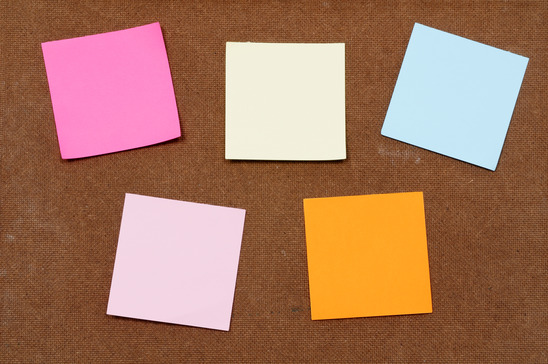
Action Items
If you have a busy office that leaves you with little time to deal with mail or invoices, set up a place to keep them at the front of your mind but out of your way until you can deal with them. A simple inbox and a basic labeling system are all you need to keep on track with your incoming items.
Using three different colors of post-its, choose one color for “urgent,” one for “moderate,” and one for “non-urgent.” For example, your light bill that needs to be paid by Friday would probably merit an urgent sticker, while something due in three weeks’ time could be labeled as non-urgent. To avoid overlooking any non-urgent items, reevaluate at the end of the week and re-label items if necessary.
Drawers
Try placing a few small baskets or trays inside a shallow drawer in your desk for all those useful office supplies. That helps eliminate digging around for a paper clip or pair of scissors and lets you see at a glance if you need any more of a particular office supply.
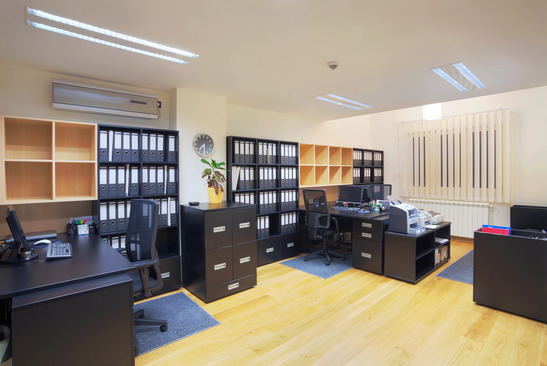
Use Space Wisely
If you have a tiny office space, keeping it clutter free can be challenging, but it’s not impossible. Use whatever space you have efficiently, including the backs of doors and wall space. Over the door hanging-storage options are perfect for smaller offices that need a little extra space to store files, bills, or even office supplies. Wall shelves can be made to fit any size wall and can provide plenty of extra storage for binders or books. Don’t be afraid to be creative — you may be pleasantly surprised by what you can come up with.
Real Estate: The Science Behind Decluttering and Staging a House
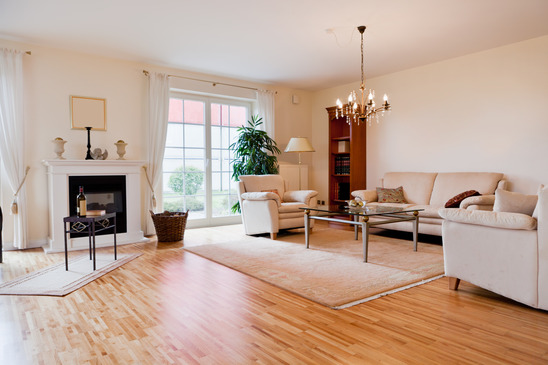
Human perception is an amazing tool. That is why we are often quick to judge an individual by what he or she is wearing or a book by its cliche cover.
The same perception can make or break a deal when trying to sell a house. People viewing your house love to see what is in your closet, medicine cabinet and even your underwear drawer. As much as they love to look through your personal items, a few fingerprints on a window or dribble of toothpaste in a sink can negatively sway a buyer’s opinion.
Let’s take a look at a few numbers:
- Potential buyers – 86% said that storage space is important to them (2005/2006 Maritz Research Staging Polls).
- Potential buyers – 63% said they are willing to pay more money for a house that is move-in ready (2005/2006 Maritz Research Staging Polls).
- 82% of realtors recommend staging.
- A staged house sells on average 17% higher than an un-staged house (US Housing and Urban Development)
A 2011 survey shows that cleaning and removing clutter results in 586% return on investment.
Follow these tips to help empty your house using storage and become a quick seller:
1. Place half of your items in storage
Take half of the items you own and find a reputable self-storage location to stash those precious nick-knacks away until your house sells. No one wants to view your collection of antique dolls!
Self-storage units can range from garage-like spaces to state-of-the-art, temperature-controlled facilities for collections and important items. Removing your unnecessary belongings will help reduce your personal touch in the home. Buyers want to imagine their own collections in the house.
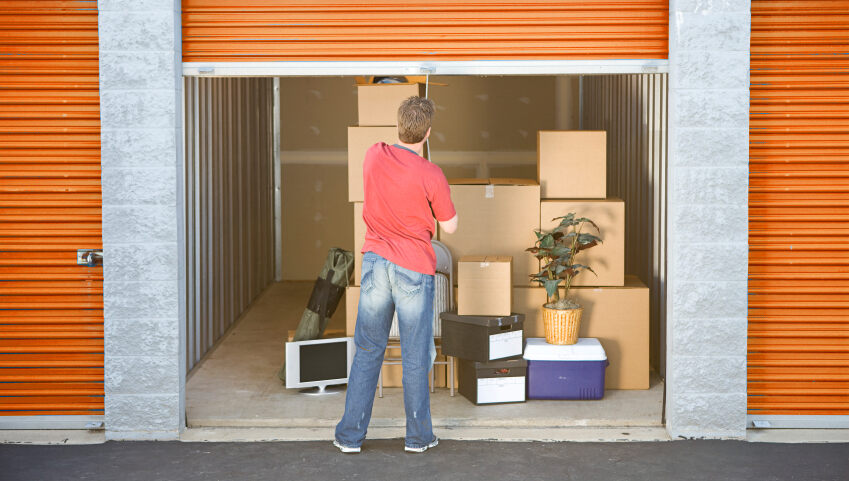
2. Place half of your remaining items in storage (again)
Seriously, remove half of what you have again and place it into storage. Each room needs only a few pieces of furniture and very little decor. About 75% of your possessions should be in storage.
We add furniture to a house as time goes on and eventually create warm, cozy spots for social gatherings. Removing the furniture will open up the rooms, adding a more open layout and an illusion of size.
Homes spend 78% less time on the market when de-cluttered and staged, so get that furniture in a storage unit as fast as you can.
3. Clean every day
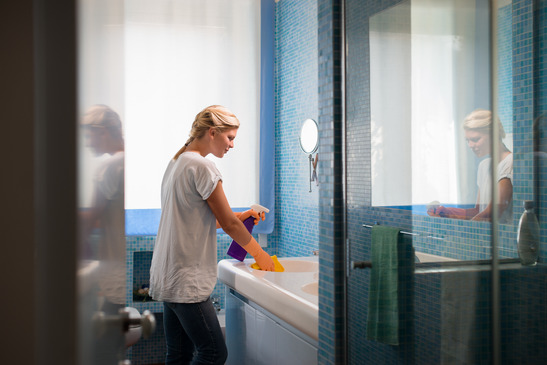
Research conducted by Dr. Andrea Angott published in the Chicago Tribune shows that the most important thing to do when selling a house is to remove personal items from bathrooms, including soap and toothbrushes.
People don’t want to buy a house that they feel is being lived in; they want the feeling of a fresh start. If you are going to try and live in the house while selling, give yourself a half hour each morning and night to make sure all personal items are put away.
You also don’t want to forget to clean. Bathrooms have to be spotless, beds must be made daily and windows should be streak free. You want your house to represent perfection as much as possible.
4. Think neutral
If you have any furniture that features bright shades of color, you may want to just place those items in storage as well. Paint walls in neutral beige, grey, whites and browns they appeal to a wide range of buyers. That bright yellow kitchen may turn people away! From a physiological perspective, different neutral colors have different associations, especially with some hints of black mixed.
Appeal to the masses to get the best possible results when selling your house. No matter what you do to try and sell your home, removing personal belongings and cleaning can make the largest impact.
Think of how you would like to view your future house. Is it filled with someone else’s belongings, or is it in pristine condition waiting for your finishing touch?
Get the gloves on, book that storage unit and get to work. Your bank account will thank you later.